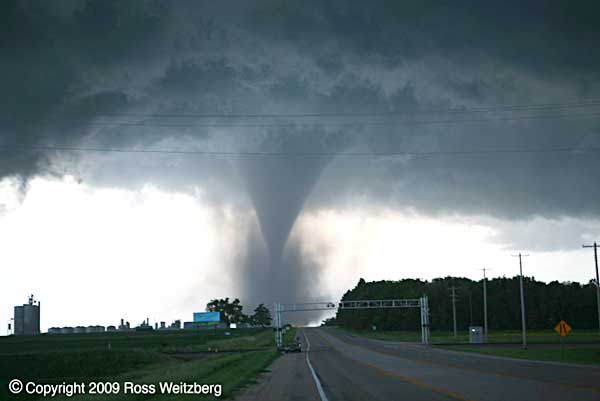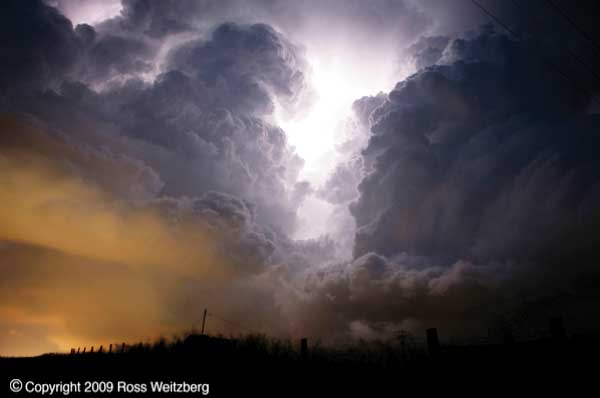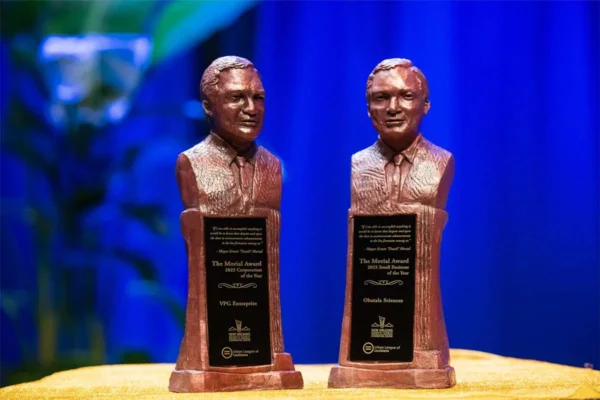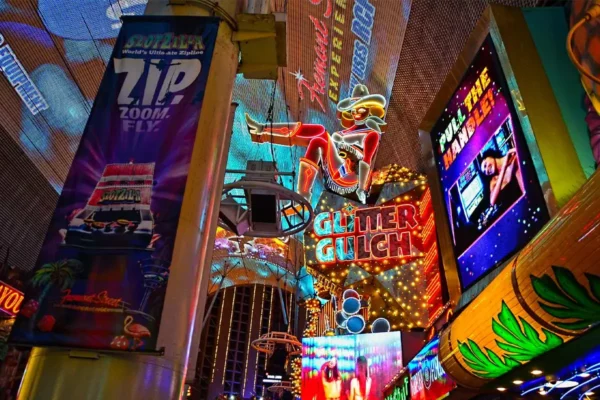Just about every individual in the tradeshow industry has a hobby. Whether it is poker, cooking or collecting stamps, each person needs something to take their mind off of a stressful workday.
But what if one person’s hobby is just as, if not more, strenuous than a regular day working in the tradeshow industry?
For Ross Weitzberg, whose hobby is chasing violent storms, this is just the case.
Weitzberg is currently the president of Space Potential, a full-service tradeshow company based in Los Angeles. He has been chasing storms for more than 12 years.
“A very good friend of mine from college has been chasing since the early 90s,” said Weitzberg. “He invited me to go with him back in 1999. My first exposure to chasing was all it took; I was hooked.”
As opposite as they seem, working in the tradeshow industry and chasing storms have their parallels. For example, both involve eating terrible food and staying in low-grade hotels, both require long hours and are physically demanding, and both also take tremendous dedication.
“I think it takes a certain type of person to work in the tradeshow industry,” said Weitzberg. “Someone who has grit and determination, and isn’t easily deterred by challenge. The same is true of storm chasing.”
Storm chasing definitely has its challenges. Weitzberg calls these “white knuckle moments;” when chasing the storm becomes an intense situation that could have a dangerous outcome.
“In my 12 years of chasing, there have been numerous close calls,” said Weitzberg. “A couple of years back, we were in the Texas Panhandle nestled close to a supercell, the variety of thunderstorm most often responsible for producing tornadoes. To maintain a safe distance and a good viewing proximity, we jogged a bit east to stay ahead of the storm.”
“At the same time, another storm quickly formed and intensified right over us,” he said.
“This storm began to merge with the original storm we were pursuing. Before we had time to remove ourselves from beneath the new cell, it began spewing a dense cascade of hail that ranged in size from quarters to golf balls.”
Luckily for Weitzberg and his crew, no one was hurt.
“The van got a little dinged up and the windshield received an impressive crack,” said Weitzberg. “When you consider what our fate could have been, we more or less escaped unscathed.”
Not every day chasing storms will include a “white knuckle moment.” Most days involve a lot of work for a small glimpse of a storm. Finding the storm is much harder than just looking up at the sky.
“Every morning starts with deep analysis to formulate an accurate forecast, which is based on what we discover in the data,” said Weitzberg. “This starts us off toward a general target area, where we feel the best mix of atmospheric ingredients are present to spawn tornadoes.”
All of the work that goes into finding a developing storm only sometimes leads to a successful outcome. Most of the chase is spent sitting in a car for 12 to 14 hours each day for at least a week, if not longer.
If a storm does happen to develop, the group has to be ready to sit tight in the middle of it without getting into too much trouble, which still happens to some experienced storm chasers.
“I’ve seen many veteran chasers get themselves into some bad situations,” said Weitzberg. “If you have a fast-moving, violent storm bearing down on you and no escape route, even the most experienced chasers can find themselves in quite the bind.”
For novice chasers, Weitzberg suggests going on a paid, professional tour, or just not chasing at all.
“The newest crop of chasers seem determined to get closer, stay in the path of danger longer and one-up each other in an increasing market for the most extreme, up-close footage of a tornado,” he said.
He explains that a majority of the chasers today are in it for money, and they build tank-like vehicles to get the best shot to sell.
“Some of these individuals feign the pretense that they are attempting to advance the science that seeks to better understand tornadoes and increase warning times,” said Weitzberg. “The truth, however, is that they want to sell their unique footage from inside a tornado to the highest bidder.”
The amount of new chasers just proves that the hobby has grown immensely since Weitzberg first started. The development of new technology and the growing interest have spawned new expansion in the storm chasing community.
“There was a time not so long ago that chasing was truly a gentleman’s hobby,” said Weitzberg. “Everyone knew everyone else, there was genuine camaraderie among chasers, and most of the regulars prowling the plains each spring practiced their beloved pastime with courtesy and responsibility.”
That courtesy and responsibility has not been completely depleted, however. Everyone in the storm chasing community still respects and understands each other, as well as the controlling and wavering force: Mother Nature.
“You might see something amazing every day,” he said. “I learned quickly that Mother Nature is often at her most beautiful when she is at her most fearsome.”
Space Potential is a full-service tradeshow company that specializes in eye-catching exhibit design. For more information, contact ross@spacepotential.com.
| Home |
| People on the Move |
| National News |
| International News |
| Opinions |
| Tradeshow Calendar |































